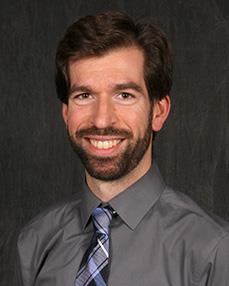Telehealth Exercise Program evaluating fatigue and physical function in rural cancer survivors
This study plans to learn more about how a telehealth exercise program designed for rural survivors of cancer can help improve cancer related fatigue.
Why this Research Matters
If you join the study, you will participate in two virtual assessments, including measures of physical function, online questionnaires, and the collection of a small drop of blood using a device designed for at-home collection. You will also participate in shorter versions of these assessments up to five times (every two weeks during the 12-week program). You will also be given the option to participate in two additional assessments occurring at the University of Colorado Anschutz Medical Campus or University of Montana. These optional assessments include an exercise test with additional small blood draws and a measurement of body composition. After initial assessments, you will be randomly assigned to receive the 12-week telehealth exercise program or join a wait-list control group. Participants in the control group will participate in all study assessments during the initial 12-week period, following which they will start the telehealth exercise program. All participants will eventually receive the telehealth program. The program is created and delivered by a Cancer Exercise Specialist and consists of live telehealth exercise sessions in Weeks 1 and 6 (using Zoom Videoconference Software) and 5-7 weekly personalized exercise sessions through a personal training application (free to participants). The program will contain both aerobic (e.g. walking) and resistance (e.g. weight lifting) exercises. The personal training application allows text communication with the Cancer Exercise Specialist, who will teach you how to perform exercise, both demonstrating them and observing you doing them. Based on your progress in the program, you may be scheduled for additional live telehealth exercise sessions up to every two weeks, to update your program. Each live session lasts about one hour and all exercise sessions are designed to last 30-60 minutes. Assessments include the performance of simple tests of physical function, including how fast you walk, how many times you can rise from a chair in 30 seconds, how well you balance, and how fast you can march in place for two minutes. Online questionnaires ask about fatigue, quality of life, anxiety, depression, and physical activity. The collection of a small drop of blood with be done with a device designed for comfortable and independent use at home, then mailed to a study site with prepaid postage. The device attaches to the upper arm and uses a small needle (lancet) to briefly pierce the skin, resulting in the automatically collected small drop of blood. These assessments will be performed before and after the telehealth exercise program (or wait-list period), and shorter versions will be performed every two weeks during participation (up to five additional times). You will be mailed basic home exercise equipment (resistance bands), equipment for assessments, and a commercial fitness tracker (yours to keep). The commercial fitness tracker will be used to measure your average daily physical activity and time in bed at the start and end of the program, and to track the performance of your personalized exercise sessions.
Who can Participate
1. Age ≥ 18 and < 90 years of age. 2. Diagnosis of breast or prostate cancer. 3. Cancer treatment criteria: -Completion of treatment with curative intent > 3 months prior to and < 5 years from study initiation. -Treatment must include hormonal, radiation, chemotherapy, and/or immunotherapy. Those who have received only surgery are not eligible. -Individuals diagnosed with breast cancer currently receiving maintenance hormonal therapy, with no planned treatment changes in the next six months, are eligible. 4. Home zip code meeting Health Resources & Services Administration (HRSA) definition of rural (data.hrsa.gov/tools/rural-health). 5. Access to high-speed home internet. 6. Possession of smartphone or laptop with front-facing camera. 7. Willing to participate in a 12-week telehealth exercise intervention or 12-week waiting period prior to intervention with brief remote physical assessments and dried blood spot collection every 2 weeks.
Study ID
Protocol Number: 24-1398
More information available at ClinicalTrials.gov: NCT07001241
Compensation Information
Meet the Team

Principal Investigator